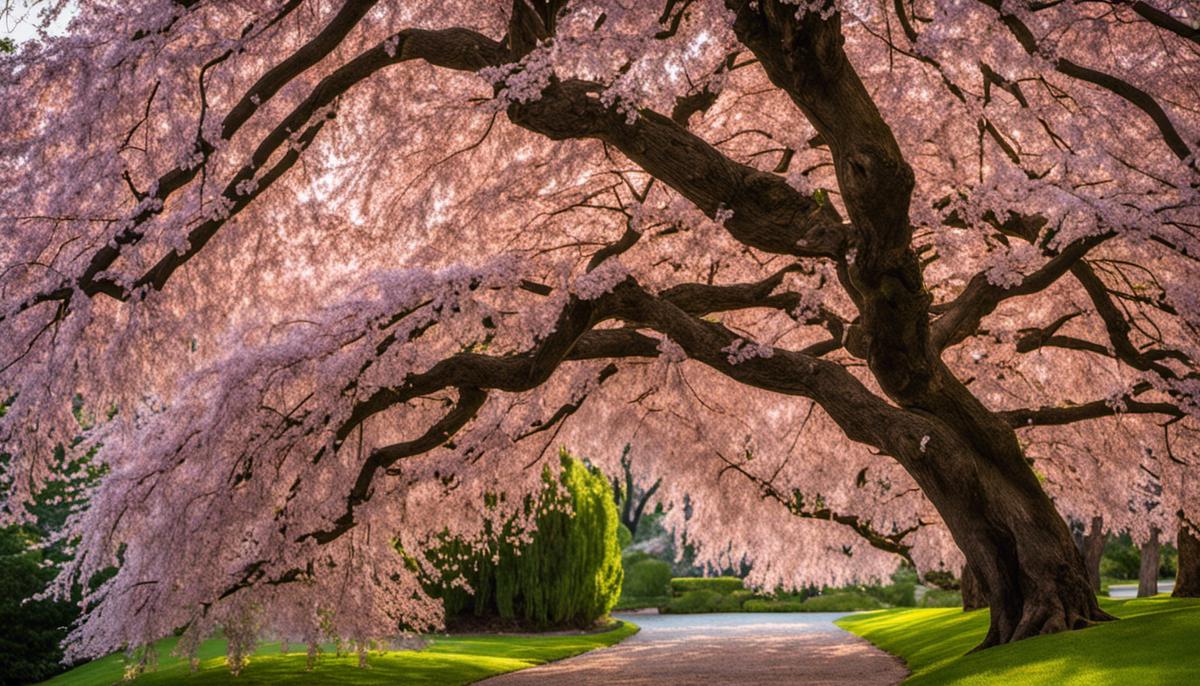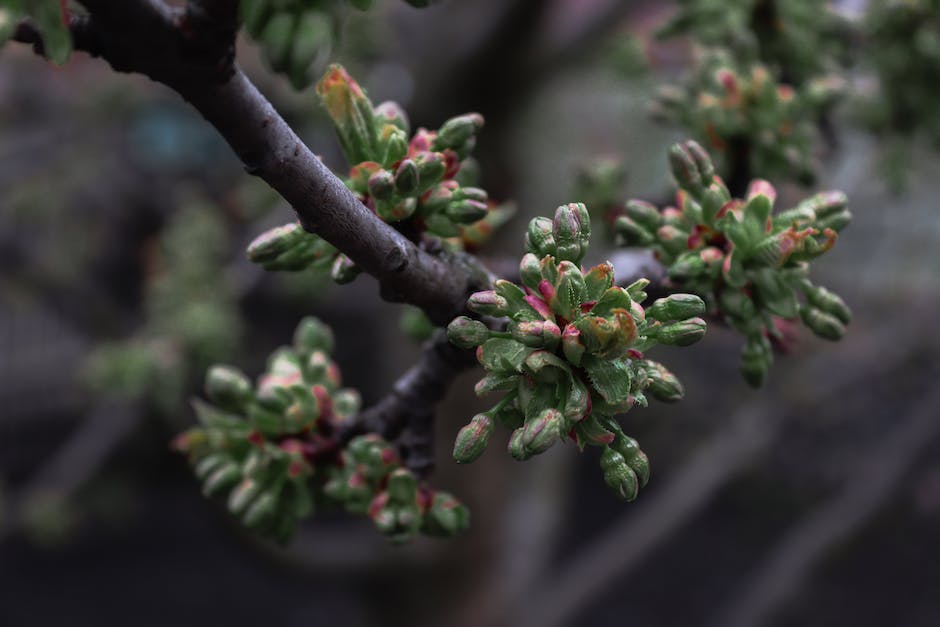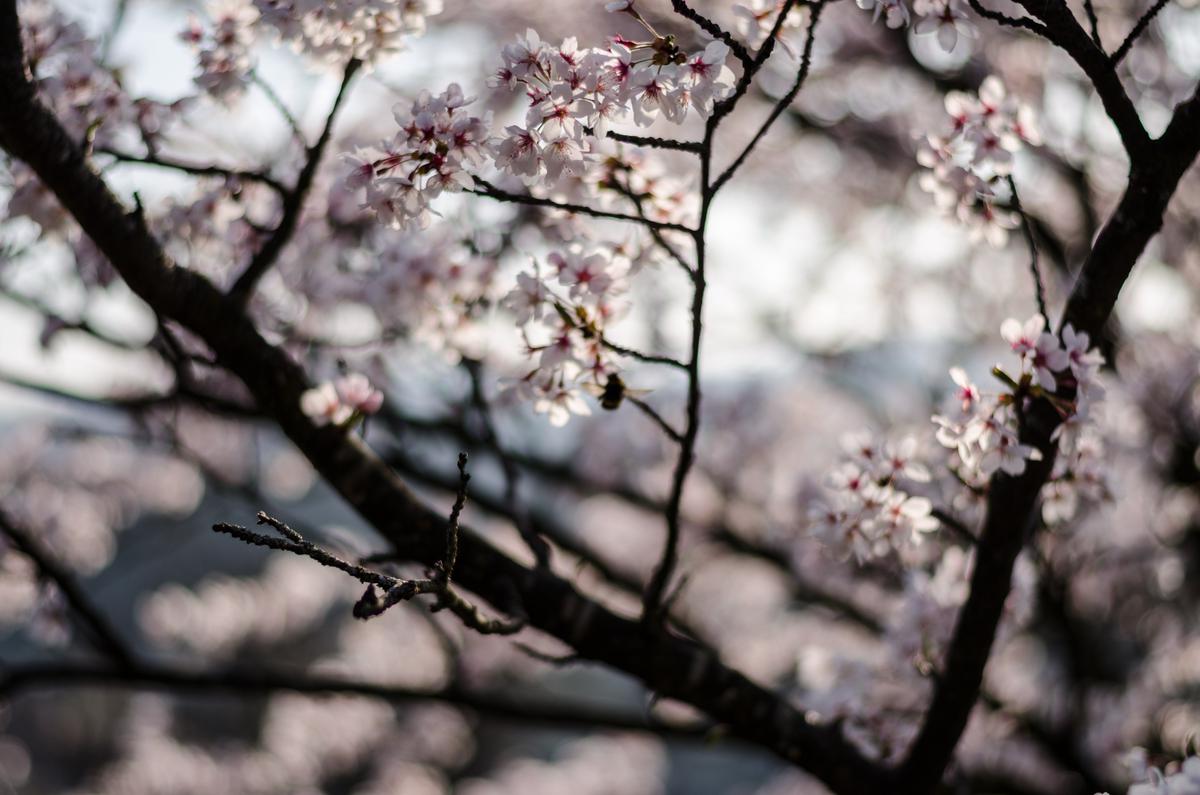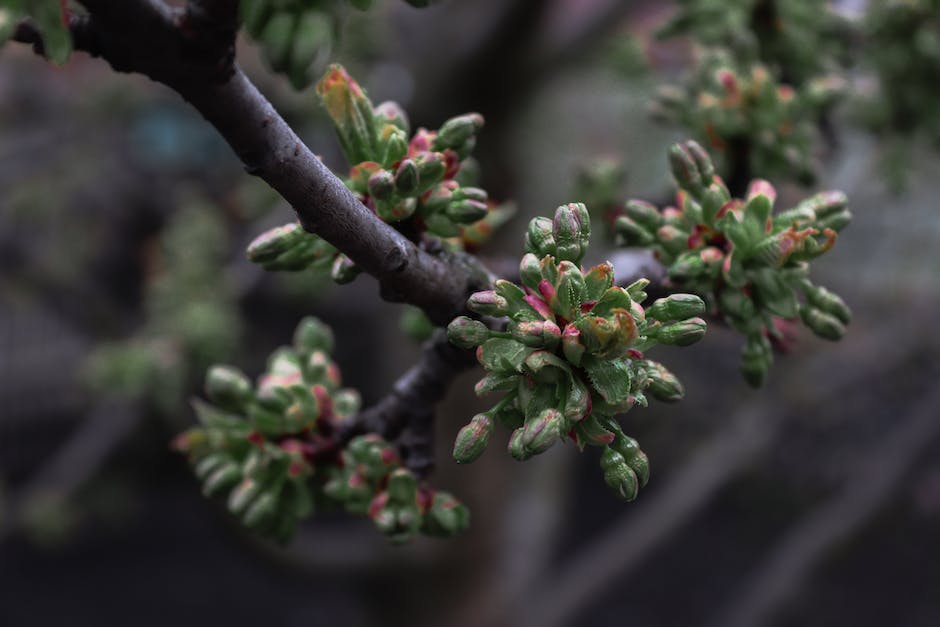Mastering Weeping Cherry Tree Trimming

There’s a certain charm and elegance to the cascading branches of a weeping cherry tree, yet it requires a special approach to maintain its health and aesthetic appeal. Becoming familiar with the peculiarities of this tree’s structure and growth pattern is key, as is knowing how to identify potential threats like disease and death in its branches. This educational guide will not only assist you in gaining this fundamental understanding but also introduce you to proper pruning techniques necessary for this tree species. Keeping this information on hand will help ensure your weeping cherry tree receives the best care, blooms profusely, and adds a unique charm to your landscape.
Understanding Tree Structure
Unraveling the Intricacies: Why Understanding the Structure of a Weeping Cherry Tree Matters
Blooming heralds of spring, the Weeping Cherry trees beautifully grace our landscapes, their cascading branches laden with breathtaking pink and white blossoms. At first glance, it might seem as though the allure of these ornamental trees lies solely in their striking aesthetics. But there’s a whole lot more to these living piece of art than meets the eye. Standing strong beneath those vibrant blossoms is a structure that’s eminently fascinating and critical to the tree’s overall health and longevity. And for those who have made horticulture their happy place, understanding this structure becomes incredibly significant.
The Mighty Branches: Weeping Cherry Tree’s Distinctive Backbone
The structure of a Weeping Cherry tree starts with its branches. Their distinctive weeping habit doesn’t just give the tree its name, it also lays the foundation for its health and growth. They’re more than just good looks. These branches serve crucial functions, acting as conduits for transporting essential nutrients, and providing support for the dazzling display of blossoms.
Developing a firm understanding of these branches helps you monitor their condition, ensuring they retain their robust health. Pruning becomes a much more precise act when one comprehends the structure, bearing in mind that maintaining the tree’s natural form is crucial.
The Roots Beneath: Grounding the Weeping Cherry
A tree’s vitality is deeply embedded in its roots, and the Weeping Cherry is no exception. These often overlooked elements anchor the tree in place, absorb water and nutrients, and store reserves for dormant periods. Understanding how healthy roots should appear enables you to spot potential issues like root rot or pest infestations in their early stages.
Leaves and Blossoms: The Life-Bearing Duo
Featuring on the outermost part of the tree, the leaves and blossoms not only add charm to the Weeping Cherry’s physique, but they also play an indispensable role in its survival. They facilitate photosynthesis – a fundamental process that helps the tree generate energy necessary for growth and reproduction.
Why Understanding Matters
By discerning the structure, you can implement maintenance measures that keep the tree blooming season after season. Also, this comprehension equips you to recognize when the tree is under stress or infected, so that appropriate action can be initiated promptly.
For everyone diving into the world of horticulture, remember that each tree’s core structure is a symphony composed of many parts. The Weeping Cherry plays its melody flawlessly, impressing us all with its perfectly pitched beauty and resilience. Learn to understand and appreciate this symphony, and it’ll never stop playing its enchanting tunes in your life’s garden.

Identifying Dead or Diseased Branches
Title:Tree-health Sleuth: Unearthing the Secrets of Dead and Diseased Weeping Cherry Branches
Calling all weeping cherry tree enthusiasts! As true aficionados of these trees, we know the intricacies of their roots and can appreciate the essential role of leaves and blossoms. Now, let’s take our love and understanding a step further by delving into branches—those lovely cascading arms that give our weeping cherries their distinctive charm.
Remember, we’ve already gotten familiar with a weeping cherry’s structure—the trunk erupting into an elegant spray of gracefully drooping branches. Each branch plays a critical role in the tree’s survival and affects its appearance. Spotting the troubled ones early on can mean the difference between a blighted tree and a flourishing spectacle.
Firstly, let’s talk about bark. Healthy weeping cherry tree branches have smooth and lustrous bark, with a deep taupe to chestnut color. Diseased or dead branches may exhibit peeling or cracked bark, typically with a dull, lifeless hue. Be vigilant and inspect your tree periodically using your keen eyes and discerning touch, it’s a useful skill best honed with practice.
Next, let’s consider foliage—the tree’s feathered cloak and energy resource. While lacking leaves doesn’t necessarily spell doom and gloom, a stark branch amidst lush foliage could be a sign to watch. If it remains barren well into the growing season, it’s likely dead or diseased. Another telltale sign is leaves wilting or turning brown out of sync with seasonal changes—a clear distress signal from your tree.
Keep in mind, though, that not all diseases are on the outside. Internal decay might not be easily observable at first, but over time, the affected branch may look thin or brittle. It may start to droop noticeably lower than the others due to structural weakness.
It’s not all just aesthetics, though. The telltale scent of decay or molds, fungi growth, or unusual swellings, are other potential beacons of illness that shouldn’t be overlooked.
Armed with these insights, it’s important to take action swiftly when dead or diseased branches are found. Pruning is often the best way to prevent the spread of disease and ensure the continued vitality of your precious Weeping Cherry tree. Always remember to disinfect your pruning tools before and after to prevent spread.
So, roll up those sleeves and get out there. Our trees need us. Let’s not just be passive watchers but active caregivers, ensuring that our weeping cherry trees retain their charm season after season. Remember – a healthy branch equals a happy tree.

Proper Pruning Techniques
Moving on to the nuts and bolts of pruning a weeping cherry tree, the process is definitely a critical one. It ensures optimum health while allowing the sublime beauty of this phenomenal tree to shine through. There’s something ethereal about the way its pendulous branches sway in the wind, so it’s well worth getting the technique right!
The best time to prune a weeping cherry tree is in late winter or early spring. This is when the tree is dormant, and it minimizes the risk of disease spread. Don’t forget, though, autumn is an acceptable alternative for species that flower in spring. The point here is to steer clear of the growth phases and stick mainly to the periods of dormancy.
The technique starts with an assessment of the tree’s appearance and health. Identify broken or diseased branches by previously discussed indicators like changes in bark characteristics or the presence of unusual swellings. These should be your priority when pruning.
Now, let’s get to the pruning process. Use sharp, sterile pruners or a pruning saw for larger branches to eliminate any potential transfer of disease. Make diagonal cuts close to, but not flush with, the trunk or parent branch. This angle helps the tree to heal faster by shedding water away from the cut, preventing decay.
Remember the weeping cherry’s structure, and prune accordingly. You’ll want to maintain its beautiful weeping shape so avoid cutting branches too short. Remove hanging branches that reach the ground and cut back branches so they keep a safe distance from the trunk. In the process, you heighten the aesthetic appeal and reduce the chances of disease spread.
As a general rule, never remove more than 20% of a tree’s branches per year to avoid unnecessary stress on the tree. An overly pruned tree takes longer to recover and is more susceptible to pests and disease.
Don’t forget to look out for suckers, those opportunistic shoots that sprout from the base of the tree. They sap essential nutrients and water from the primary tree, so snip them off promptly for overall tree health.
And finally, remember to clean and disinfect your pruning tools after each use. This step is key to preventing future disease spread among your garden gems, including your cherished weeping cherry tree.
Proper pruning enhances the tree’s vitality and beauty, a credential that weeping cherry trees carry with pride. The seasoned hobbyist knows that careful, knowledgeable pruning techniques are essential to a flourishing cherry tree that’s sure to turn heads and hearts in every season. And isn’t that a sight to behold?

The flourishing beauty of a well-maintained weeping cherry tree is certainly worth the effort and time invested in understanding its needs and executing precise care practices. Recognizing the signs of disease or impending branch death, and applying suitable pruning methods, are paramount for maximizing your tree’s health and showcasing its natural artistry. Keep this guide in mind as you continue your gardening journey, allowing it to guide your efforts in preserving the mesmerizing appeal of your weeping cherry tree. Your actions will not only effect the health of your tree, but also enhance the overall aesthetics of your landscape.



